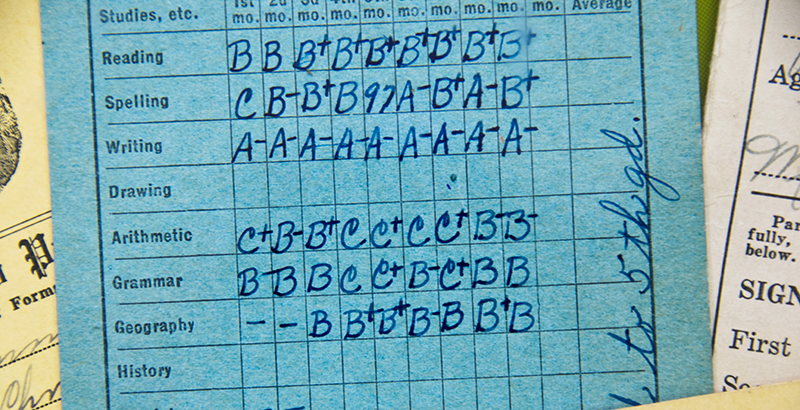A Parents’ Guide to Finding and Understanding Useful Education Data: 6 Ways to Get More out of Those Confusing School Performance Numbers

These days, the public repeatedly hears that U.S. schools have become overly standardized factories for drilling students through a sharply narrowed curriculum. And yet we simultaneously hear that schools are experimenting with diverse new ways of teaching all over the country.
The number of public Montessori programs is up. Outdoor education programs are on the rise. Dual language programs appear to be growing — including in languages such as Hebrew, Vietnamese, Arabic, and Korean. Meanwhile, despite claims that they’re being squeezed out of U.S. schools, trend lines suggest that U.S. students have been taking more arts and music courses.
This range of options can be bewildering for families trying to figure out how schools are performing in their state and district. Fortunately, they have access to a broader range of data than ever before … if they can decode it.
That’s no simple task, so here are a few useful options for understanding those school performance numbers:
How are students at a particular school or district doing, academically speaking?
The best place to start this search is probably your state’s district and school report cards pages. Here’s an example from Georgia. You’ll see that it gives snapshots and trend lines for DeKalb PATH Academy’s academic performance on a range of subjects (math, English, science, and social studies). For example, in math we can see that 36 percent of Dekalb PATH Academy elementary schoolers scored proficient or better on the state’s math assessment in 2017.
It also provides some information on student demographics, school climate, and public funding. The report card tells us that 38 percent of DeKalb PATH Academy students are formally classified as English learners by the state of Georgia, the state ranks its school climate with five stars (out of five), and the public spends an average of $9,972 on each student. It also offers a synthesis of this information to rank the school (a B on an A–F scale) and some context about how it’s performing relative to the rest of the state.
If you’re suspicious about how the school’s data are presented (and/or how a school landed the letter grade it did), there’s a link at the bottom where you can download the data and dig deeper. You can also look around the state’s website to find additional, finer-grained school data — like, say, that 56 of DeKalb PATH Academy’s 381 students had disciplinary “incidents” in 2017.
Sadly, although every state compiles reports cards for schools and districts, the outcomes are like the proverbial snowflakes: no two are exactly alike. Take a look at examples from Arkansas, Michigan, Minnesota, Texas, and Oregon. Some — like Arkansas — follow Georgia’s example and compile all the data into a readily available single-letter grade rating for each school. Others, like Michigan and Oregon, don’t. Shoot, California publishes intricate school dashboards as well as report cards.
There are private organizations that attempt to present school information in a way that is easily understandable for parents and comparable across state lines — GreatSchools, Niche, SchoolDigger, et al. — but these mostly rely upon the data each state makes available on its own report cards. That is, if you’re comparing your kids’ school in a new state to schools in your old state on GreatSchools, you should be sure both states use the same academic tests. EdWeek published a useful list here of which states use which standardized test.
What other data are there? How can I round out my view of our family’s school?
There are countless places to look, but the U.S. Department of Education’s Office for Civil Rights (OCR) maintains a valuable — though usually a little dated — database with schools’ and districts’ personnel, financial, and academic information. Here are the most recent OCR data from DeKalb PATH Academy, where you can see that 8.7 percent of the school’s 23 teachers (i.e., two teachers) were in their first year in the classroom in 2015. You can also see that 10.2 percent of the school’s students — and 21.3 of the school’s gifted and talented students — were African-American.
The National Center for Education Statistics (NCES) also provides school- and district-level numbers that can give context to what you’re learning from these other sources. It provides data on human capital, education funding, and some general information on how districts spend money. For instance, Kalamazoo Public Schools (my alma mater) employed around 725 teachers to serve its 12,616 students in the 2015-16 school year. Meanwhile, West Chicago Elementary School District employed four librarians for its 4,571 students that year.
How can I learn more about the quality and availability of early learning options in my state or district?
Most states now have a Quality Rating and Improvement System (QRIS) that collects and publishes data on how early education providers do at offering safe, supportive learning environments. Here are examples from New Jersey, Delaware, and Illinois. Say you live in Cape May, New Jersey, and you’re looking for a childcare center that’s been reviewed and rated for quality by the state. Plug those requirements into New Jersey’s database and you’ll find the TraCen Child Development Center, which has earned three stars on Jersey’s QRIS system. Or maybe you live in Prospect Heights, Illinois, and are looking to see if there are any early learning providers with a “gold” rating from the state in your area. Check it out — here’s Eisenhower Elementary.
I want to send a strongly worded letter to my member of Congress about issues related to children’s health and development in her district. Where can I get that information?
The KIDS COUNT Data Center is a magnificent aggregator of public data on a wide range of health, education, and demographic indicators. And yes, it sorts by congressional district. For example, the child poverty rate in Republican Rep. Fred Upton’s district (Michigan’s 6th district, where I grew up) was 26 percent in 2011 (up from 20 percent in 2008); 16 percent of kids were living in extreme poverty.
What if I want to dig into national education data?
For historical context and trends, the NCES’s The Condition of Education is the best place to start. Once you find a chart with general information on a topic, there are often links in the caption that provide more information. Want to see how English language learner enrollment has changed in South Carolina since 2000? The Condition of Education has you covered — the state’s ELL numbers have increased eightfold since then. Want to know how many Bengali-speaking ELLs there are in U.S. schools? According to The Condition of Education, there were 14,435 in fall 2015, up from 10,700 in 2008-09.
If you’re interested in big, 30,000-foot views of the U.S. public education system, boot up the NCES’s Data Explorer for the National Assessment of Educational Progress (NAEP). Unlike states’ academic assessments, NAEP test results are a relatively stable source of achievement data. While academic assessments differ from state to state (and can change from year to year), NAEP sets a consistent academic bar. The assessment is administered to a representative sample of U.S. students each year, so “The Nation’s Report Card,” as the test is known, is a useful starting place for conversations about how U.S. schools are doing. For instance, while Washington, D.C., has shown consistent improvement on NAEP for a decade, the rest of the country seems to have stalled.
Finally, if you’re curious about how the United States stacks up internationally, the Organisation for Economic Co-operation and Development (OECD) catalogs a range of information on developed countries’ education systems. The OECD famously ranks nations by their academic achievement; according to its latest information, the U.S. lags the developed world in math and performs slightly above average in science. Immigrant students in the United States do much better than immigrant students in other OECD countries. The OECD’s Education GPS page provides other information. For instance, while “50% of 25-34-year-old [U.S.] women attained tertiary education [college, universities, and trade schools] in 2017 compared to 38% of men … the employment rate of tertiary-educated young women is about 9 percentage points less than for men and they earn only 74% as much as men with similar educational attainment on average across OECD countries.”
What if I still feel like I don’t know enough about my kids’ potential (or current) school?
Well, most districts publish additional information about schools and their students: everything from details about paperwork deadlines and schedule changes to testing policies and graduation requirements. But at some point, it’s best to get off the web browser and just go and ask questions. Start with teachers and principals, but don’t be afraid to work your way up the chain to district — or state — education leaders.
Data are shaped by so many factors — laws, administrative choices, and structural inequities like academic tracking and enrollment zones — they’re only the raw materials of a school’s vastly more complex story. Reading scores at a school may have dropped the past few years, but that could be the result of a changes to the tests, or how reading proficiency is being calculated, or something else.
Important as they are, data are only a starting point.
Get stories like these delivered straight to your inbox. Sign up for The 74 Newsletter

;)
